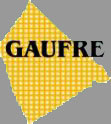The Second Scientific Support Plan for a Sustainable Development Policy (SPSD-II) (2000-2006) of the Belgian Science Policy has financed the search for instruments for sustainable decision making within specific government needs. The Supporting Actions and Mixed Actions within PODO-II thereby aimed at improving research multidisciplinarity in order to provide balanced integration of the three main components (the environment, the economy and the social aspects) of sustainable development. The GAUFRE project ideally fits in the Mixed Actions concept. It is a typical "commons" problem that includes conflicting objectives, precautionary aspects, intergenerational conflicts and equity issues. It also incorporates active participation of all potential user groups (including the general public) from the very beginning. This is accomplished by the use of workshops and the active involvement of an extensive user committee.
A spatial structure plan for the Belgian Part of the North Sea (BPNS) is highly needed:
- Current discussions and public controversy on the use of the BPNS: e.g. the demand of green energy such as windmills at sea, the EC fisheries policy and the introduction of marine nature reserves
- Policy priorities: e.g. in the Bergen Declaration (2002) of the 5th International Conference of the North Sea, the Ministers of Environment indicated their awareness of the potential conflicts between the requirements for conservation and restoration of the marine environment and the different human activities in the North Sea. The cumulative effects of the uses of the sea and the seabed on the ecosystems and their biodiversity are of increasing concern to the North Sea states, in particular in relation to the conservation of the Natura 2000 networks and other areas of ecological significance. In order to prevent and resolve the potential problems created by such conflicts, the Ministers agreed that the strengthening of cooperation in the spatial planning process of the North Sea nations related to the marine environment, is required. The Ministers invite "to consider the possibilities for improving environmental assessment of human activities in the marine environment, taking into account existing legal requirements".
- Increased demand for sea based activities: e.g. cables and pipelines, shipping traffic and recreation on sea
Various previous projects have generated data and information that were of use as input for the GAUFRE-project. As stated under Methodology, the project aimed at an interdisciplinary approach in which outputs and results of previous projects are used and redigested leading to a process of cross-fertilisation and added value going beyond the previously monodisciplinary and short-sighted approaches.
The first real interdisciplinary study on the North Sea ecosystem was started in the Impulse Programme Marine Sciences (1992-1996) under the title of "Definition and application of ecological criteria and economical indicators for the study of effects and cost assessment of different types of pollution of the North Sea".
A first approach towards a Spatial Structure Plan for the Belgian Part of the North Sea (and therefore a direct predecessor of the GAUFRE-project), resulted in the Limited Atlas of the Belgian Part of the North Sea (Maes et al. 2000). This atlas gives an overview of the spatial distribution of the then actual uses of the BPNS implicitly indicating potential conflicts. It became soon clear however that this atlas needs improvement and updating:
- new uses such as windmills and marine nature reserves evolved
- the atlas lacks spatial uses such as cables, fisheries and recreation
- the atlas lacks intensity of uses such as shipping traffic, sand and gravel extraction, dumping and dredging,...
- the atlas lacks a thorough representation of ecological and physical data
The First Scientific Support Plan for a Sustainable Development Policy (SPSD-I) (1996-2002) of the Belgian Science Policy has financed projects that generated data on very specific and particular components of the North Sea, such as on species and habitats as indicators for the sustainable management of the Belgian coastal shelf:
- HABITAT
- Pathology and ecotoxicology of seabirds and marine mammals of the North Sea
- BUDGET
- Long term trends of the macrobenthos of the BPNS
- MARE-DASM
Several projects in the Second Scientific Support Plan for a Sustainable Development Policy (SPSD-II) (2000-2006) focussing on aspects that are specifically relevant for the sustainable management of the BPNS thereby delivering additional insights that were useful for the GAUFRE-project:
- BALANS
- TROPHOS
- MAREBASSE
More data from projects financed by other organisations were also existing but not always available to the public, or had to be searched for in specialised databases:
- ICES


